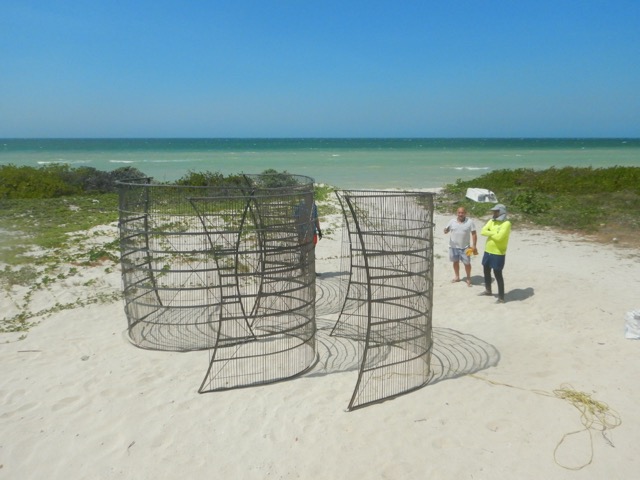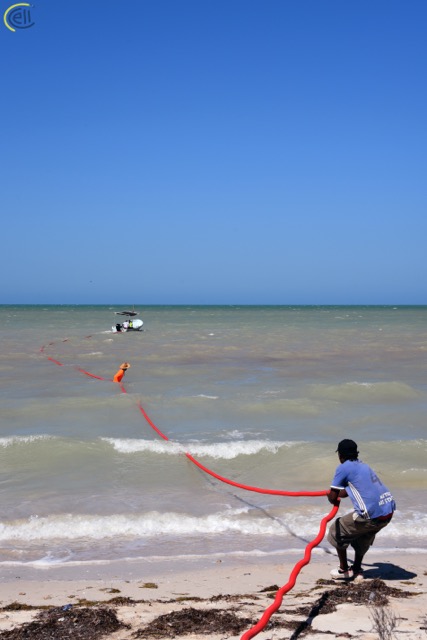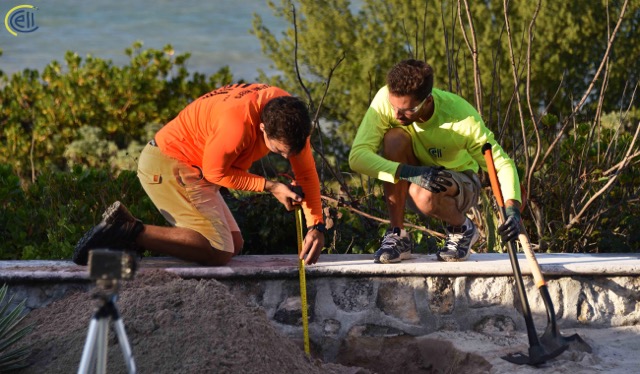


150.0m
150.0m
80.0m
1.50m
Tucked between the turquoise Gulf and the sun-bleached salt flats of northern Yucatán, Telchac is one of those rare places that feels both unhurried and alive with quiet charm. Once a humble fishing village, it has recently been recognised as one of Mexico’s official Pueblos Mágicos — a title celebrating destinations rich in history, culture, and natural beauty.
In May 2021, CCell installed its first prototype reef in Telchac. More than 50 reef units were deployed in three groups, forming a barrier approximately 150 metres long designed to protect the shoreline of nine coastal properties. All structures were connected to a single subsea power cable running back to the client’s home — a simple yet powerful setup for testing large-scale mineral accretion technology.

The dome-shaped reef modules used in this project were fabricated from steel, each measuring roughly 2 m wide, 2.2 m long, and 1.5 m high. Every unit was secured by four sand anchors — more than 100 anchors in total across the installation. Earlier field trials had allowed the team to reduce anchor installation time dramatically, from 45 minutes to under 5 minutes, by using a combination of pressurised water and air to fluidise the sand.
Due to Telchac’s shallow near-shore waters, the entire installation was completed by hand, without cranes, lift equipment, or boats. This approach minimised environmental disturbance and avoided disruption to the local community.



To evaluate the effect of mineral accretion technology, each reef segment received a different power level — 100%, 50%, and 10%. Over time, these varying currents fostered distinct patterns of biological colonisation. The reefs quickly became home to growing populations of crustaceans, fish, green algae, arthropods, and molluscs.
The presence of reef-building organisms such as molluscs and arthropods accelerated natural rock formation, reducing the power required for accretion and allowing the reef to reach optimal porosity faster. This, in turn, improved the reef’s ability to dampen incoming wave energy — a crucial step toward scalable, self-sustaining coastal protection.

Between 2021 and 2022, we observed a subtle change in the beach profile along the coast adjacent to the reef. Sand accumulated next to the reef, increasing by over 30 cm along the shoreward side.
.jpeg)
After three years in operation, the Telchac reef was retired and fully removed, marking the conclusion of a successful pilot. The project yielded extensive insights that continue to shape future CCell designs, including:
Telchac served not only as a proof of concept but also as a testbed for innovation — demonstrating that large-scale reef systems can be installed with minimal equipment, powered efficiently, and embraced by marine life. The lessons learned here continue to inform the next generation of adaptive, nature-based coastal defences being deployed around the world.